HOLOVERSE
PRESENTS
Background
& Innovations in True Volumetric 3D |
|
| |
| Welcome to the
world of Volumetric Imaging where we attempt to
create the practical "crystal ball" of the
soothsayers -- a volume in which all space and time
may be displayed at your command. We have not been
alone in this quest but have followed the path of the
early pioneers and visionaries. Gauge your analysis
by the curl of your thoughts as we venture into the
color and charm of the chromosphere. |
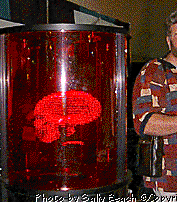 |
|
| |
|
|
| |
The
Early Pioneers |
|
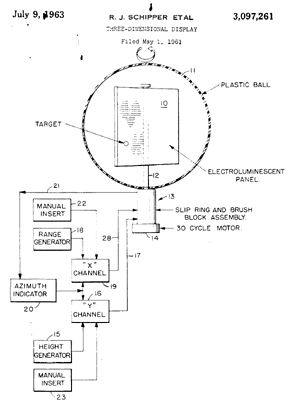 |
One of the earliest
functional volumetric imagers was this excellent design
by Schipper from 1960. It set the standard for the
rotating screen technologies which were to follow --
including x-y addressing, a speed control motor, and a
stationary enclosure.
At the time, high speed light emitters
were extremely costly serious hindering the development
of large prototype systems for the study of the human
visual system response. |
|
| |
|
|
| Ketchpel's 1960 Cathode Ray Tube Imager
represents a major step in the integration of television
technology and volumetric imaging. Although the electron
beam steering technology was at its infancy he clearly
anticipated systems which would embody complex,
computer-controlled single and multiple guns within an
evacuated enclosure. |
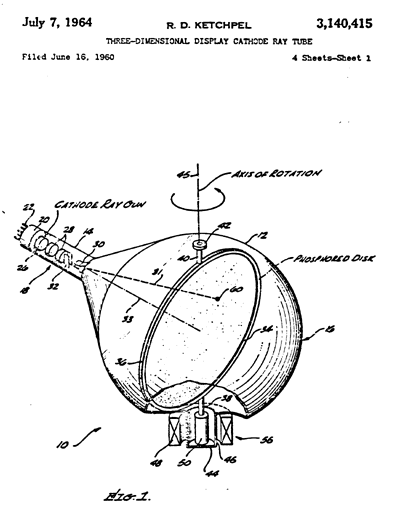 |
|
| |
Moving
to Solid State Systems |
|
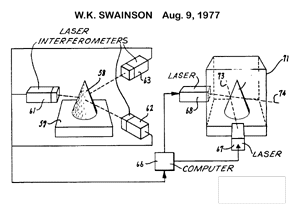 |
The Swainson Laser Imager in the mid
1970's represents a conceptual breakthrough in volumetric
systems. For the first time, the concept of a volume
comprised of a homogeneous media and illuminated by
intersecting beams was proposed. Swainson enumerated a
broad spectrum of excitable composites. |
|
| |
|
|
| n 1990, Eastman Kodak researcher, E.L. Morton,
devised a method for eliminating the defocusing effect of the change in
optical path length in the helical screen volumetric imagers. |
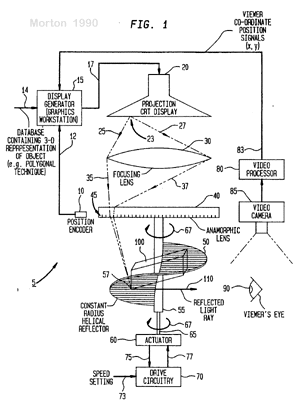 |
|
| I |
|
|
| |
Digital
Volumetric Systems |
|
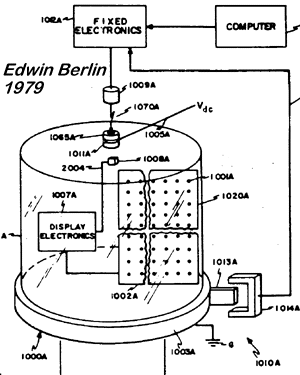 |
As a student at MIT in the late 1970's,
Edwin Berlin developed a innovative approach to data flow
problem which had been constraining early systems. He
placed the display electronics on a rotating matrix of
light emitters and used a high-speed optical link to
connect to the outside world. The technology was
exiled from MIT by myopic visionaries.
|
|
| |
|
|
| |
|
|
| |
Volumetric
Imaging Projects |
|
| |
The Volumetric Matrix Imager Model 200 |
|
| The Model 200 is a 18" diameter x
36" high Matrix Imager System. All the computational
components are contained within the enclosure of aluminum
and polycarbonate. This Imager was designed for lower
cost experimentation and demonstration. It found success
as a research platform in academia and government as well
as in the "high art world" when Jenny Holzer
chose it as the centerpiece for her Siddeutchse Zeitung
exhibit "Lustmord" in 1994. In addition to wide
visibility in the European press, the Imager was included
in a Sunday New York Times Art Section article on her
exhibit.
This Model Imager has found a place at
SIGGRAPH 1995, trade shows and symposia for general advertising
purposes.
|
| HoloVerse has acquired certain rights to
Volumetric Imaging, Inc. technologies including: |
|
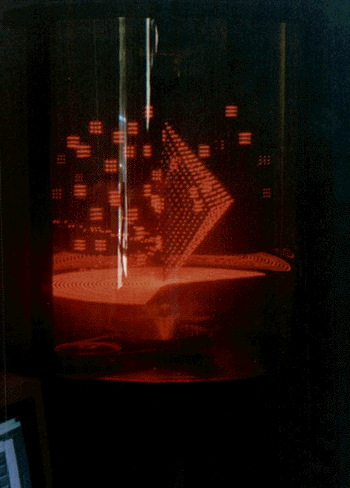 |
|
| |
|
|
Other Volumetric Researchers
Stanford University, Texas Instruments, U.S. Navy
Back to Top
.............................Email Holoverse |
|
| |
| |
| |
| |
| |
|
|
| |
|
|





